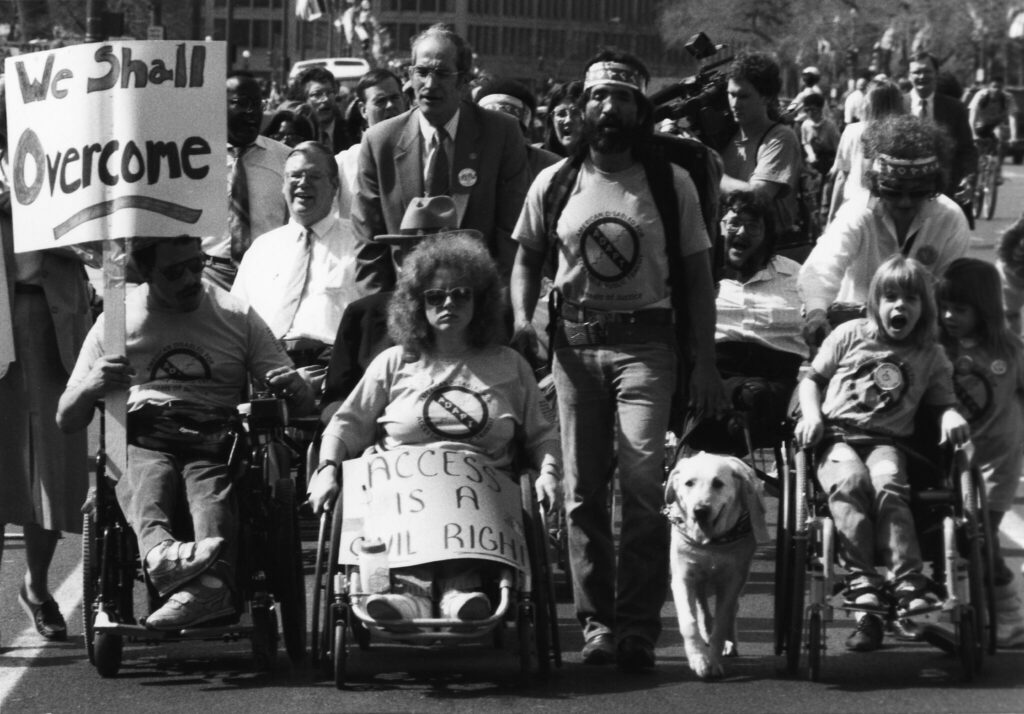The gig economy is alive and well. In fact, this modern online phenomenon has only…
Accessibility and Inclusivity in Advertising
Sixty one million adults in the U.S. live with a disability. When it comes to accessibility and inclusivity in advertising, however, brands are only now beginning to think more critically about who they represent and how they represent those individuals. On the other side of that coin lies the consideration of how accessible digital content is to audiences with mobility, vision, hearing and cognitive disabilities—an oversight that can subject a business to a web compliance lawsuit.
On July 26th, 2021, the Americans with Disabilities Act (ADA) marked its 31st anniversary. This landmark legislation was created to ensure equal access and opportunity for those living with disabilities in American communities and workplaces. Reflecting on the progress made in the last 30 years, disability rights activist Judy Heumann and civil rights lawyer John Wodatch wrote the following in a joint New York Times opinion piece:
“Randomly look at any 50 print advertisements. You will no doubt find racial and ethnic diversity; you’ll see women and men of different sexual orientations; you will see gender fluidity and people of all ages. What you won’t see (or see very little of) are representations of disabled persons.”

This observation points to the heart of the issue—representation. When those in charge of creative strategy are able-bodied and consider campaign attributes like accessibility only as an afterthought, it puts those living with disabilities in the same corner, often leaving them out of the picture altogether.
Defining Accessibility and Inclusivity in Advertising
While inclusivity refers to who gets represented in an ad campaign—and how accurately they are represented—accessibility informs whether those with disabilities are able to experience the content, and to what extent they are able to do so. Adding narration to a video, for example, makes it possible for a blind person to experience the video’s messaging. Adding subtitles to the same video makes it accessible to an individual with a hearing impairment.
While some may fear that implementing accessibility and inclusivity practices would require a major overhaul of digital assets, even small changes can make a big difference. Consider, for example, a site visitor with color blindness who abandons an online shopping cart or is unable to respond to a brand’s call to action, simply because the text color makes the message too difficult to see. Ensuring there is enough contrast between a text color and its background already marks a step in the right direction.
Inclusive Advertising Campaigns
From historic disability rights movements like the 504 sit-in to the more recent online cripple punk movement, the disabled community has long fought an uphill battle for recognition, not as a monolith with a singular story, but simply as people—our friends, neighbors and family members.
In 2020, Microsoft launched an ad campaign for its Surface laptop, featuring an individual using American Sign Language (ASL) to communicate, simultaneously narrating their words. In the same year, Visit Florida—the state’s official tourism marketing corporation—put out an ad featuring an individual using a beach wheelchair. While brands have a long way to go, campaigns like these mark a positive step on the road to more inclusive representation.
How to Implement Accessibility and Inclusivity in Advertising
While Web Content Accessibility Guidelines are available and often required for company websites, creating a truly inclusive ad campaign extends to the entire content funnel. Here are just a few ways brands can go about implementing accessibility and inclusivity practices in their marketing efforts:
Hire Talent From the Disabled Community
There’s no substitute for authentic representation. When companies hire marketers, writers, web developers and leadership candidates living with disabilities, new perspectives and lived experiences are brought to the table.
Use Diverse Focus Groups
By testing ad campaigns on diverse focus groups, a creative agency can gain valuable insights on inclusivity, avoid stereotyping and create a more well-rounded experience for all.
Create an Accessible Website
An inclusive creative strategy can seem superficial when those represented are unable to follow through on its call to action due to accessibility issues. A top-to-bottom approach to inclusivity should inherently consider accessibility as well. Brands and content developers can take the following steps:
- Include alt text—a short, written description of an image—on visual assets, like photos and illustrations.
- Ensure text color and background colors have contrast for colorblind individuals.
- Include narration and subtitles/captions on videos. This includes landing page videos and social videos.
- Ensure individuals using assistive technology can easily navigate target pages.
- Implement responsive design across all platforms and screen sizes.
- Educate creative teams on accessibility and inclusive practices.
Accessibility at the Forefront
As Vikas Khorana writes for Forbes, “applying universal design principles at the outset and ensuring that all people with disabilities are prospective customers of your brand helps keep accessibility top of mind.” The disabled community is multi-faceted, which means accessibility in advertising requires a multi-faceted approach from the outset. When we consider the barriers to accessibility, what we’re really looking at are opportunities to solve these issues and serve a much broader, more diverse population.




